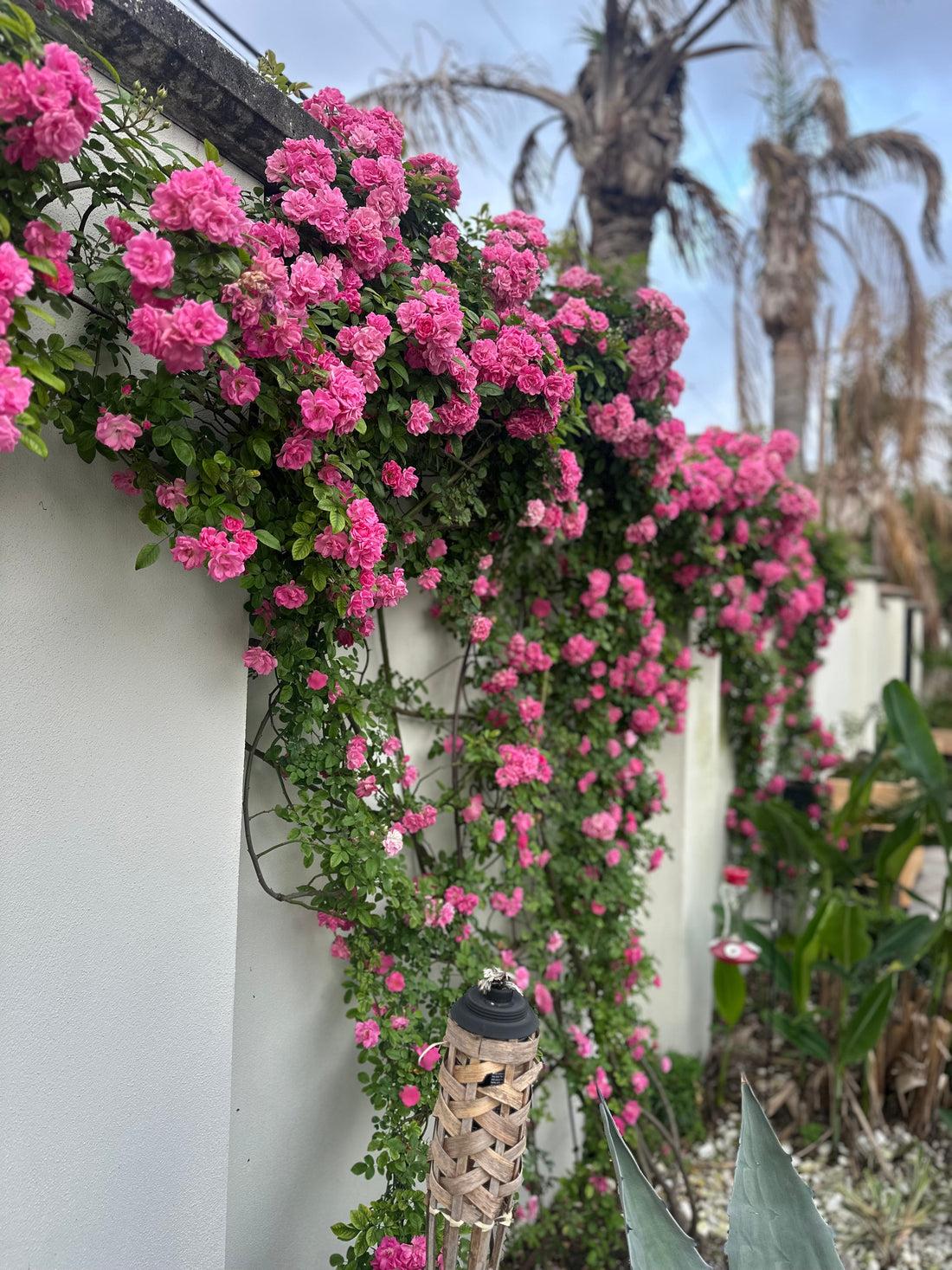
Peggy Martin
Share
The Peggy Martin rose, often called the “Hurricane Katrina rose,” is a living emblem of resilience born from tragedy. Before it captured the hearts of gardeners nationwide, this vigorous climber quietly adorned the fences and arbors of Southern gardens. Peggy Martin, a passionate rosarian from Louisiana, originally grew the rose at her family home in Plaquemines Parish. Unnamed at the time, the rose was a reliable bloomer, producing cascades of pink flowers without demanding much care. Little did she know, this unassuming rose would soon become a horticultural legend.
When Hurricane Katrina devastated the Gulf Coast in 2005, Martin’s family property was submerged under saltwater for weeks. The catastrophic storm surge claimed lives, homes, and landscapes. Martin herself lost not only her home but her parents and her entire garden — or so she thought. Amid the muck and ruin, two surviving plants emerged from the devastation: a crinum lily and the hardy, thornless climbing rose that had once draped her arbor. The survival of this rose became an unexpected symbol of hope and renewal in a region desperately in need of both.
The story of the rose spread rapidly through gardening circles, aided by the tireless efforts of rose enthusiasts like Dr. William Welch, a horticulturist from Texas A&M. Recognizing its extraordinary hardiness and beauty, Welch helped propagate and distribute the rose nationwide, dubbing it the “Peggy Martin rose” to honor its caretaker and its journey through disaster. Sales of the rose were also used to raise funds for Gulf Coast garden restoration efforts, giving the plant a philanthropic legacy in addition to its horticultural one (Welch, “Antique Roses for the South,” 2005).
Beyond its symbolism, the Peggy Martin rose is a gardener’s dream. It thrives in a wide range of climates (USDA Zones 4–9), shrugs off pests and diseases, and dazzles with a profusion of pink blooms in spring and fall. Its nearly thornless canes make it an especially desirable choice for family gardens and public spaces alike. As a low-maintenance, fast-growing climber, it’s become a staple in both Southern landscapes and gardens far beyond its Gulf Coast roots (American Rose Society, “Peggy Martin Rose Fact Sheet,” 2020).
Today, the Peggy Martin rose stands not just as a testament to survival but as a story of triumph. It reminds gardeners that even in the aftermath of unimaginable loss, beauty and resilience can rise from the ruins. Its legacy is both deeply personal and universally inspiring — proof that sometimes, even a simple rose can carry the weight of hope on its petals.
References:
• Welch, W. C. Antique Roses for the South. Taylor Trade Publishing, 2005.
• American Rose Society. “Peggy Martin Rose Fact Sheet.” 2020.
• Southern Garden History Society. “The Legend of the Peggy Martin Rose.” Magnolia, Vol. 20, No. 2, 2006.
• Texas A&M AgriLife Extension. “Peggy Martin Rose: A Symbol of Survival.” 2019.


74 comments
9iwg5b
h8zqn8
nuyn4i
7ddp0f
nky6q5